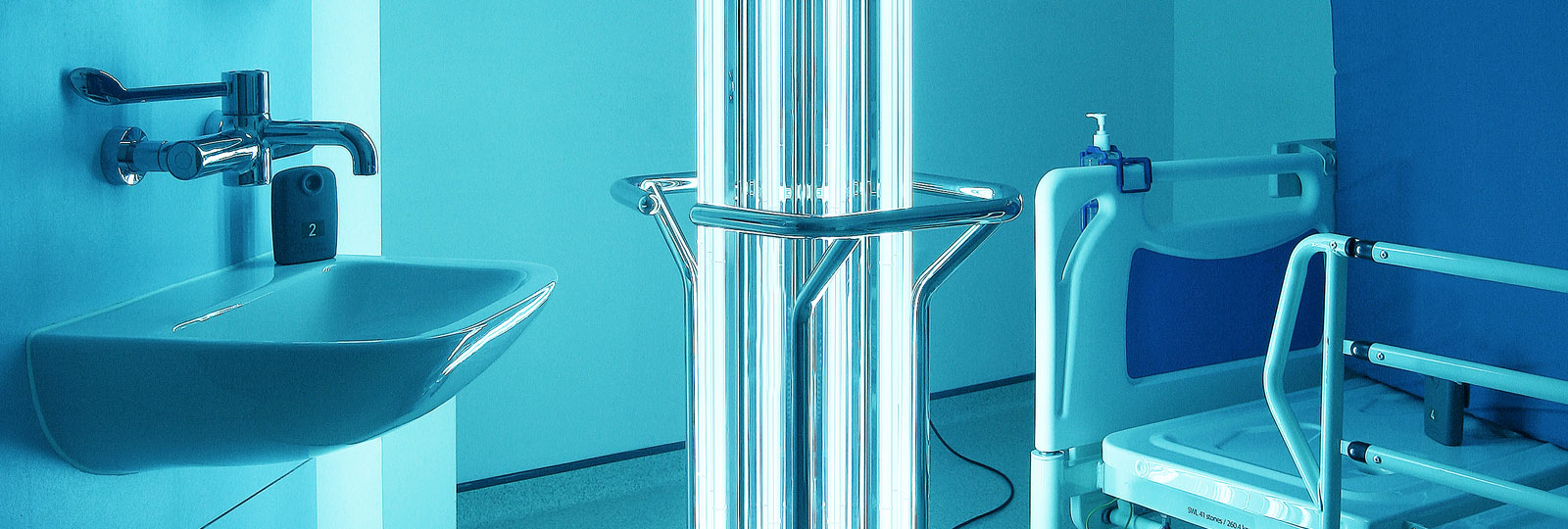
Welcome back to the Inivos Academic Digest, where our team share the most interesting and thought-provoking research across microbiology, PPE, and infection prevention and control. This month, we’ve seen a great deal of interest in how ultraviolet light decontamination programmes can benefit different environments – with researchers considering its value in both hospitals and non-healthcare settings. It’s been particularly fascinating to see more evidence in favour of decontaminating PPE with hydrogen peroxide vapour. Earlier this year, our own research demonstrated the viability of decontaminating sterile gowns with ProXcide HPV without adversely affecting garment integrity. Now, researchers have concluded that the lifecycle of N95 masks can be extended through a similar process.
SARS-CoV-2
This month, the value of ultraviolet irradiation in reducing the viral stock of SARS-CoV-2 has seen a great deal of interest as researchers consider UV’s benefits against the pathogen in a variety of healthcare settings.
A study by the West German Centre of Infectious Diseases1, published in the American Journal of Infection Control, found that the coronavirus pathogen is highly susceptible to ultraviolet light decontamination. Researchers found that even high viral loads can be inactivated within nine minutes by ultraviolet-C (UV-C) decontamination. Finding that UV-A was not able to reach similar levels of decontamination, the authors advised in favour of using UV-C to deactivate SARS-CoV-2 in patient settings – as well as when preparing samples for research.
Another study in the American Journal of Infection Control,2 this time by the Department of Infection Prevention & Control at Cincinnati Children’s Hospital Medical Center, saw favourable reductions in hospital-acquired infections by instating a dedicated disinfection team using automated UV-C technology following discharge. The hospital, which typically operates at or above maximum capacity, saw HAI reduction of 16.2% following program implementation.
An evaluation of disinfection procedures in The First Affiliated Hospital of Zhejiang University3 this month, again published in the American Journal of Infection Control, revealed the effectiveness of routine UV-C decontamination in reducing the potential risk of healthcare associated infection.
Using a combination of ultraviolet light decontamination three times daily alongside continuous plasma air disinfection, researchers were able to limit the presence
of SARS-CoV-2 RNA to 2 of 122 surface samples.
Beyond healthcare environments, the journal of Building and Environment,4 considered the value of ultraviolet decontamination in mass-gathering built environments such as hospitals, schools, airports, and transit systems. The authors concluded that frequent decontamination was critical to limit viral spread; however, they cautioned in favour of automated technology with enhanced control techniques.
Outside UV, a study in the Journal of Infection5 which investigated the presence of SARS-CoV-2 in Zhongnan Medical Center in Wuhan found significant evidence of contamination in the COVID intensive care unit and obstetric isolation unit. Researchers considered that the hospital environment could potentially be a source of virus spread and added their voices to the growing call for adequate environmental cleaning, strengthen infection prevention training, and improve infection prevention.
Infection Prevention and Control
In the International Journal of Hygiene and Environmental Health,6 a new study demonstrates that respiratory droplets from individuals with COVID-19 can be displaced by ventilation systems and deposited on surfaces. The results suggest that ducts, ventilation and exhausts can play a role in the distribution of pathogens, as air flow could transfer and deposit infected res-piratory droplets from infected persons to the mucous membranes of persons standing against the air flow direction.
In the Journal of Infection and Public Health,7 a study by King Khalid University has demonstrated the impact of multimodal infection prevention policies, including use of hydrogen peroxide vapour and compartmentalisation of patient rooms, to reduce the rates of hospital-acquired Acinetobacter spp, E. coli,and staphylococci infections.
The prospective cross-over analysis of 738 patients of the Aseer Central Hospital ICU over three years found that rates of hospital-acquired infections (HAIs) significantly decreased following the introduction of hydrogen peroxide vapour and separation
of patients through compartmentalised wards.
PPE Decontamination
Further evidence has been published in favour of the viability of personal protective equipment decontamination using hydrogen peroxide vapour, this month in the Journal of the American College of Surgeons.8
The study by a multidisciplinary team at the Washington University School of Medicine, Barnes Jewish Hospital, and BJC Healthcare found the lifecycle of N95 respirator masks could be extended using a process of decontamination with hydrogen peroxide vapour.
This follows Inivos’ own research with the University of Southampton, demonstrating the viability of ProXcide HPV to decontaminate sterile gowns without damaging garment integrity.




